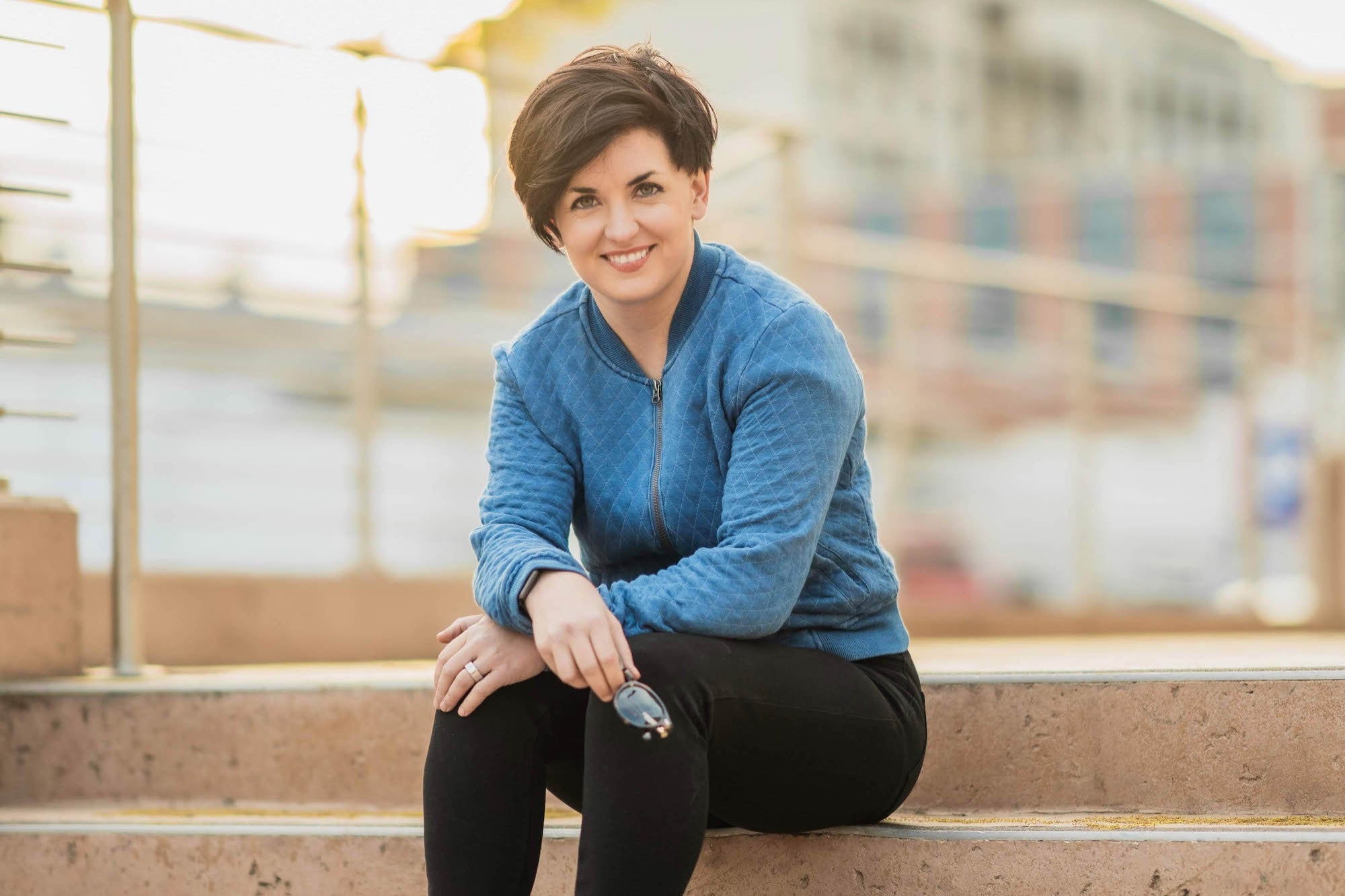These Coworkers-Turned-Friends Started a Side Hustle on Amazon — Now It's a 'Full Hustle' Earning Over $20 Million a Year: 'Jump in With Both Feet' Achal Patel and Russell Gong met at a large consulting firm and "bonded over a shared vision to create a mission-led company."
By Amanda Breen Edited by Jessica Thomas
Key Takeaways
- Cabinet Health began with a few products that cut out the middlemen and sold directly to consumers online.
- The initial market picked up relatively quickly — and the business hit over $1.5 million in sales in its first year.
- The company has continued to grow since then and is projected to see nearly $30 million in annual sales in 2024.
This Side Hustle Spotlight Q&A features Achal Patel and Russell Gong, longtime friends and founders of Cabinet Health, which offers over-the-counter medicines and supplements in glass bottles that can be reused.
 Image Credit: Courtesy of Cabinet Health. Achal Patel, left; Russell Gong, right.
Image Credit: Courtesy of Cabinet Health. Achal Patel, left; Russell Gong, right.
What was your day job when you started your side hustle?
Patel: I initially met Russ when we were working at a large consulting firm and bonded over a shared vision to create a mission-led company that integrated our backgrounds in healthcare and sustainability. Years later, we formed the idea to start the world's first sustainable healthcare company, Cabinet Health, while I continued to work in consulting and Russ was in infantry officer school learning combat tactics. We both had hectic day jobs but built Cabinet during our time off on nights and weekends.
When did you start your side hustle, and where did you find the inspiration for it?
Gong: We started Cabinet Health initially as a small Amazon business that scaled. Achal was the original brainchild behind the idea, finding a white space opportunity to innovate in the healthcare market. Thanks to childhood summers spent in his grandfather's medicine factory, he found that in front of us was a scalable advantage of quality medicine manufacturing. While I was in the Army, we thought through how we could inspire a new generation of healthcare that innovated the traditional packaging and supply chain model to be more sustainable.
Related: Their 'Magic Internet Money' Side Hustle Just Hit $1 Billion in Sales: 'We'd Empty 6 Figures of Cash Onto the Counter. The Bank Teller's Expressions Were Priceless.'
What were some of the first steps you took to get your side hustle off the ground?
Patel: Cabinet Health was bootstrapped in the beginning. We brought a few high-quality products to market to start, cut out the middleman and sold them directly to consumers online. Taking that initial step to validate our proof of concept helped us get our initial investment in the door, but more importantly, it gave us valuable insights into what our customers and the planet need to really do this right. Those initial learnings allowed us to better understand how to build the foundation of the company and helped shape our company values and vision as well as our product roadmap. After a quick positive signal from our online sales, we invested every penny we had back into building the future vision of the business and into R&D to develop sustainable healthcare packaging and product offerings. From there — and with support from our friends, family and teammates — we built Cabinet Health into what it is today.
What were some of the biggest challenges you faced while building your side hustle, and how did you navigate them?
Gong: The biggest challenge of the side hustle is the period of uncertainty before making it your "full hustle." Side hustles tend to catch most of us by surprise if they disrupt the career paths that we originally set for ourselves.
For example, I know that founding a sustainable healthcare company was never on my "life plan" list. The newness of such a different career trajectory can be scary, as it's completely uncharted territory. I had lots of questions circulating in my head at the time. What do I do with all of my past experiences? Is this next step what I am meant to do? If I dive in headfirst, what does this mean for my future career path?
One way I navigated uncertainty was by adopting a "portfolio of life" mindset instead of a "linear career path" mindset. Instead of trying to find the next stepping stone in my career, I would think about building my startup as another item to add to my resume of professional experience. This shift in mindset reassured me that I wasn't walking away from or leaving my job but rather reallocating my time to build another professional path.
Related: These College Friends Started a 'Fun' Side Hustle That Landed Them on 'Shark Tank'— Now the Idea Is Helping Dozens Make Extra Cash: 'Start Saying Yes'
How long did it take you to see consistent monthly revenue? How much did the side hustle earn?
Patel: We saw the initial market pick up relatively early in the business and, within the first year, grew to over $1.5 million in online sales. Though not the most traditionally opportune time to launch a company, we actually saw a significant bump in revenue from Covid and the heightened focus on health and wellness with consumers. Since then, we've grown substantially and are projecting between $20-$30 million in annual sales for 2024.
What were some of the steps you took to go from side hustle to full-time business?
Gong: The first step was forging a partnership with my co-founder and closest friend. Achal and I started the business officially when we decided to build something more than just an online storefront. It was a very conscious decision bonded together through shared values and the best professional and personal decision I've ever made. We started the partnership on the strongest footing possible.
From there, we started to research more about the problem we would eventually solve and the current market landscape. We traveled around the world to better understand the market opportunity and learn the ins and outs and vast complexity of the medical supply chain. It was this firsthand experience that solidified our conviction against using single-use plastic in medicine before building the backend infrastructure for our sustainable healthcare operations.
And then lastly, we invested in and developed packaging to bring high quality over-the-counter medicines to market. This included a very long process of research and development, including rigorous safety testing, to design truly innovative, sustainable packaging for our medicines. Recognizing what goes inside the bottle is of the utmost importance; we sourced high-quality, FDA-approved medicines and partnered with an independent, third-party lab to batch-level test all Cabinet medicines for ultimate peace of mind. This additional layer of batch-level testing goes above and beyond the FDA requirements but allows us to reassure our customers that our medicines are certified free of gluten, toxins and known carcinogens.
Related: The Sweet Side Hustle She Started in an Old CVS Made $800,000 in One Year. Now She's Repeating the Success With Her Daughter — and They've Already Exceeded 8 Figures.
What does growth and revenue look like today?
Patel: We started the company in 2018 with a vision to reimagine the way the industry packages and fills every type of medicine and to eliminate single-use plastic from pharmaceuticals altogether. In that time, we have been so encouraged by the consistent growth of the brand, including everything from product development and optimizations to expanding our footprint with national retail partners and of course, the revenue and sales figures speak for themselves.
In terms of product development, we initially launched with common over-the-counter medicines and supplements, including things like 24-hour allergy relief and pain and fever relief. Each Cabinet medicine comes in a glass bottle that's designed to be refilled (again and again) with our compostable refill pouches that save you plastic waste and money in the long run. From there, we built our online pharmacy, Cabinet Rx, where we offer highly personalized care and easy transfers to our plastic-free prescriptions. Each new patient receives a personalized glass prescription bottle with refills mailed conveniently to your door in medicine-safe, compostable pouches that are made to decompose. We like to think of Cabinet Rx as a simple, sustainable swap from the traditional amber bottles made from single-use plastic. Today, we offer over 500 prescription medications, with plans to expand these offerings into additional elements like liquid medications and birth control.
In terms of footprint, last December, Cabinet launched in Target stores (more than 500) nationwide. As the first Target Zero-approved medicine brand, the launch marked an exciting step for both the brand and the industry at large, broadening the reach of sustainable, compostable medicine options to millions of homes across the U.S.
As it relates to growth, Cabinet has served over one million customers to date, with annual sales averaging $20-$30 million a year.
What do you enjoy most about running this business?
Gong: Team, team, team. I view our Cabinet team in a lot of different ways. First, there are the patients who are central to our mission and cause, serving not only as customers but also as external team members who help us build and shape our business. They've actually inspired some of our product roadmap and go-to-market strategy to date. We always keep our patient community at the core of everything we do and dedicate ourselves to serving their needs.
Second, our internal Cabinet team members work tirelessly to make sustainable healthcare solutions a no-brainer in the hearts and minds of consumers. Finally, our business partners like McKesson, Target and CVS truly believe in the future we are building to lead the next generation of sustainable healthcare. Everyone works together as one team to help solve the problem. It's an honor to run a business that helps rally such incredible thought partners together around one cause.
What's your advice for others hoping to start successful side hustles or full-time businesses of their own?
Patel: Above all else, stay resilient and committed. You have to jump in with both feet if you're going to be successful, so make sure you have a lot of conviction about what you're doing. Don't be afraid of failure. Building a successful business takes time and effort, and the business landscape is constantly evolving, so don't get discouraged by setbacks or challenges along the way. If you stay persistent, those learnings will help shape your vision and help you gradually scale up as you gain traction and resources.
Gong: Start small, but start. Don't wait for the perfect moment or conditions to begin. There's so much out of your control anyway. Start with what you have and take small, actionable steps towards your goals. Building momentum is key, and progress, no matter how small, is still progress. Let passion and purpose be your guide and help you identify what truly motivates and excites you. This, combined with a customer-centric approach, will give your business true meaning and resonance with consumers.
Looking for your next side hustle? Subscribe to Entrepreneur+ during our Memorial Day Sale and get 33% off your annual subscription. You will get total access to our entire site, including premium content, and much more!










